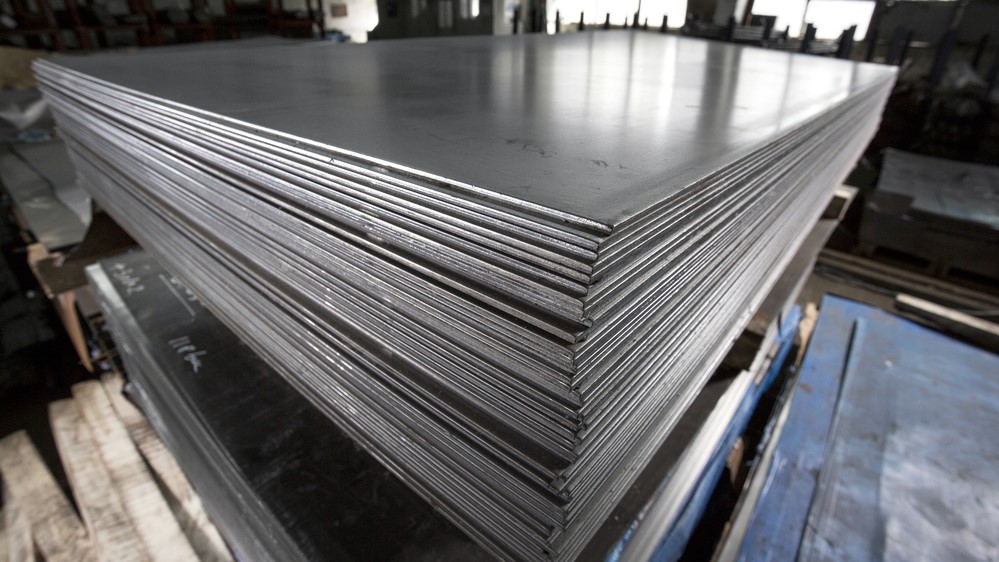BUSINESS
Composition of Stainless Steel Sheets: Why Alloys Matter

Stainless steel sheets are a staple in industries requiring high strength, corrosion resistance, and durability. The material’s versatility makes it ideal for applications spanning from architecture to food processing and beyond. Understanding what makes stainless steel sheet alloys so strong involves exploring the properties of the alloy, its composition, and the influence of various alloying elements. In this article, we’ll examine the unique attributes of stainless steel sheets and explain why stainless steel sheets suppliers recommend this material for demanding applications.
1. Composition of Stainless Steel Sheets: Why Alloys Matter
The core strength of stainless steel sheets originates from their alloyed composition, which typically includes iron, chromium, nickel, and sometimes molybdenum or titanium. Chromium, the essential element in stainless steel, imparts corrosion resistance and strengthens the alloy.
Stainless steel sheets suppliers recognize chromium as the defining factor for stainless properties. When combined with nickel, chromium forms a protective layer on the surface, preventing rust and oxidation. This protective film makes stainless steel sheets remarkably durable, even in aggressive environments. Nickel and other alloying elements increase toughness and maintain strength, making stainless steel a versatile choice across industries.
2. The Role of Chromium in Stainless Steel Strength
Chromium, usually present in stainless steel sheets at around 10-30%, is vital for corrosion resistance and durability. This element enables the formation of a thin, invisible oxide layer that adheres tightly to the steel surface, shielding it from moisture and corrosive substances. This feature is what stainless steel sheets suppliers emphasize as essential to the material’s longevity.
Moreover, chromium boosts the alloy’s resistance to both high temperatures and corrosive agents. This makes stainless steel sheets a top choice in environments with exposure to chemicals, water, or salty air. For example, in coastal infrastructure and chemical processing plants, chromium-rich stainless steel sheets maintain integrity, resist pitting, and endure high-pressure cleaning.
3. Nickel’s Contribution to Toughness and Ductility
Nickel is another critical element that contributes to the resilience of stainless steel sheets. In many stainless steel grades, nickel enhances strength and toughness, preventing brittleness even under severe conditions. Stainless steel sheets suppliers often recommend nickel-rich alloys, such as 304 and 316, for applications where flexibility, toughness, and corrosion resistance are key.
The addition of nickel also improves the alloy’s ductility, allowing stainless steel sheets to be fabricated into various shapes without cracking or breaking. Nickel-rich stainless steels are often used in the food and pharmaceutical industries, where rigorous cleaning and sterilization require resilient, non-corrosive materials.
4. Molybdenum and its Impact on Corrosion Resistance
Molybdenum is another crucial element that increases the corrosion resistance of stainless steel sheets, particularly in chloride-rich environments. Often found in marine-grade stainless steel (like grade 316), molybdenum protects against pitting and crevice corrosion, making these alloys stronger and more suitable for harsher environments.
Stainless steel sheets suppliers advise molybdenum-containing sheets for coastal constructions, desalination plants, and medical equipment. This element further enhances the alloy’s performance in chemical processing and manufacturing sectors, where high-strength, corrosion-resistant materials are essential.
5. How Stainless Steel Sheets Resist Deformation
One of the reasons stainless steel sheets are preferred over traditional steel in industrial applications is their ability to resist deformation under heavy loads. The unique combination of alloying elements allows the steel to maintain its shape and structure even when subjected to heavy stress or impact.
Stainless steel sheets suppliers emphasize the alloy’s balance between hardness and ductility, which allows it to bend without breaking or losing structural integrity. This quality is beneficial in industries like construction, automotive, and aerospace, where materials must endure significant mechanical stress.
6. Thermal Stability: Stainless Steel Sheets in High-Temperature Environments
Stainless steel sheets possess excellent thermal stability, allowing them to perform in both high-temperature and cryogenic environments. Chromium, nickel, and molybdenum help the steel maintain its structural integrity under extreme temperature variations, unlike other metals that may expand, contract, or warp.
Stainless steel sheets suppliers offer heat-resistant grades, such as 310 and 321, specifically for applications requiring exposure to high temperatures, such as furnaces, boilers, and exhaust systems. This thermal stability means stainless steel sheets remain strong and durable even under prolonged heat exposure, making them ideal for demanding thermal environments.
7. Martensitic and Austenitic Grades: The Diversity of Stainless Steel Sheets
Stainless steel sheets come in various grades, primarily categorized as austenitic, ferritic, martensitic, and duplex. Each has unique properties that make it suitable for specific applications.
Austenitic stainless steels are the most common, offering a great balance of strength, corrosion resistance, and workability, often recommended by stainless steel sheets suppliers for general-purpose applications.
Martensitic stainless steels are harder and more brittle, with applications in cutlery, blades, and wear-resistant components. By understanding these differences, manufacturers can choose the optimal grade for a given use, ensuring that the stainless steel sheet meets the required strength and durability levels.
8. Corrosion Resistance Beyond Chromium: Nitrogen and Other Alloying Elements
While chromium is essential for corrosion resistance, other elements such as nitrogen are also added to stainless steel sheets to enhance their strength. Nitrogen, in particular, increases tensile strength, allowing for thinner sheets without compromising durability.
Stainless steel sheets suppliers may recommend nitrogen-enhanced grades for applications in structural components, as these grades provide high strength without the bulk. This approach supports innovative designs and constructions where lightweight yet strong materials are crucial, such as in modern architectural facades and frames.
9. Finishing Techniques that Enhance the Strength of Stainless Steel Sheets
The final strength and durability of stainless steel sheets are often influenced by surface finishing techniques such as polishing, brushing, or coating. These finishes can improve corrosion resistance, reduce surface roughness, and, in some cases, increase the alloy’s resistance to fatigue.
Stainless steel sheets suppliers frequently offer custom finishing options to meet industry-specific needs. For example, polished finishes are popular in hygienic environments, while brushed finishes are preferred for decorative applications. Such finishing not only enhances the aesthetic appeal but also reinforces the structural strength of the sheets by eliminating surface imperfections that could lead to corrosion or stress concentration.
10. Why Stainless Steel Sheets Remain a Leading Choice for Industrial Applications
Stainless steel sheets continue to be the preferred choice in industries such as automotive, aerospace, medical, and construction due to their unbeatable strength-to-weight ratio, durability, and resistance to corrosion. Stainless steel sheets suppliers cater to a broad range of applications, offering various grades and customizations to suit different environments and operational demands.
For example, in the medical industry, stainless steel sheets are used for surgical instruments, implants, and hospital equipment. In automotive, they are essential for exhaust systems, while in construction, they are integral to load-bearing structures. The strength of stainless steel sheets, derived from their alloy composition and manufacturing processes, makes them indispensable for modern industrial needs.
Conclusion: The Unmatched Strength of Stainless Steel Sheets
In summary, the strength of stainless steel sheets is a result of their carefully balanced alloy composition, primarily featuring chromium, nickel, and sometimes molybdenum or nitrogen. These elements not only enhance the physical properties of stainless steel but also ensure its resilience against corrosion, high temperatures, and mechanical stress. Stainless steel sheets suppliers recognize the importance of these properties and continue to innovate to meet the evolving demands of various industries.
From heavy-duty structural applications to precision medical tools, stainless steel sheets have cemented their place as a vital material in modern manufacturing and construction. By understanding the unique characteristics that make stainless steel sheets strong, industries can make informed choices, benefiting from a material that offers durability, versatility, and long-lasting performance.
Keep an eye for more news & updates on TechRanker!











